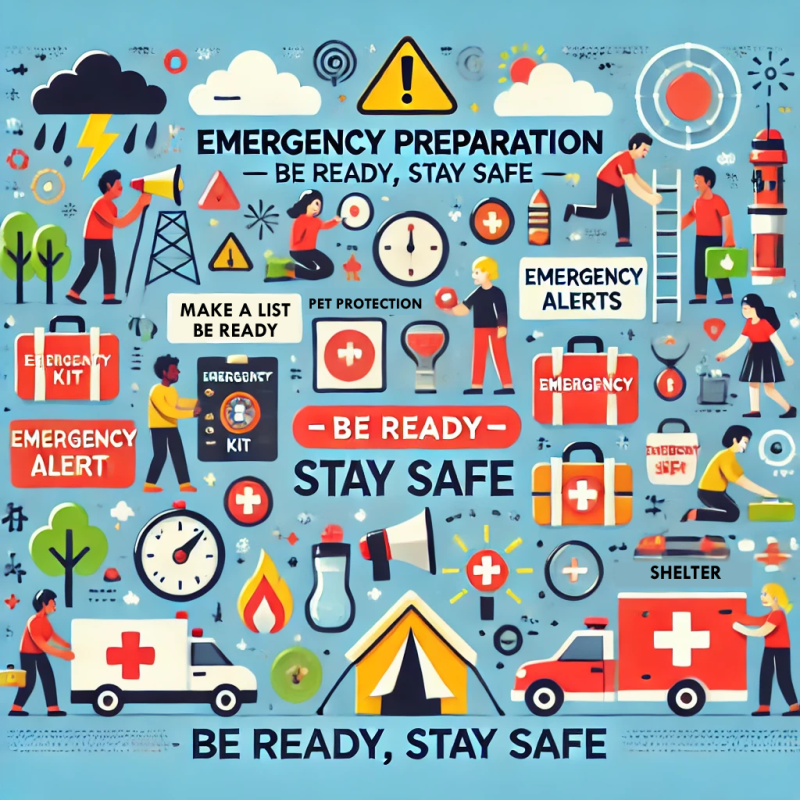
What is Emergency Preparation?
Emergency Preparation in public health involves planning and organizing resources to protect individuals and communities during public health emergencies. These emergencies can include natural disasters, disease outbreaks, environmental hazards, and other unexpected events that threaten health and safety.
Types of Public Health Emergencies:
🌪️ Natural Disasters: Hurricanes, earthquakes, floods, and wildfires.
🦠 Disease Outbreaks: Flu, COVID-19, and other contagious diseases.
☣️ Environmental Hazards: Chemical spills, pollution, and unsafe drinking water.
💥 Mass Casualty Events: Accidents, terrorism, or civil disturbances.
Key Elements of Emergency Preparation:
📝 Emergency Plans: Developing a family and community response plan.
📦 Emergency Kits: Stocking food, water, medications, and first aid supplies.
📢 Communication: Knowing how to receive emergency alerts and updates.
🚨 Evacuation and Shelter: Understanding evacuation routes and emergency shelters.
🏥 Medical Preparedness: Ensuring access to medications and medical care during an emergency.
Why Emergency Preparation Matters:
✅ Reduces Panic: Knowing what to do increases confidence and calm.
✅ Protects Lives: Fast action can prevent injury and save lives.
✅ Community Resilience: Prepared communities recover faster from emergencies.
Being prepared means you can respond effectively to protect yourself, your family, and your community when the unexpected happens.
EMERGENCY PREPARATION RESOURCES
EMERGENCY MANAGEMENT BY THE TOWN
